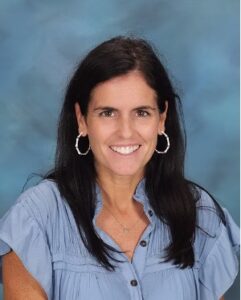
As educators in South Carolina prepare to implement new ELA standards, we’re honored to interview Beth Thompson, a veteran SC educator. Beth has used SIPPS alongside her grade-level team to transform instruction for striving second-grade readers at Piney Woods Elementary. “It has been exciting to watch how direct and systematic instruction impacted ALL of my second grade readers,” Beth says. “Teaching SIPPS has helped me grow right alongside my students. When we know better, we do better!”
Tell us a little about yourself, your school and district, and the students that you serve.
This will be my 21st year of teaching. I graduated from Columbia College with a Bachelor’s degree in Early Childhood Education. I also have a Master’s degree in Language and Literacy from the University of South Carolina, and I am a certified reading teacher and Nationally Board Certified in Early Childhood.
Over the course of my career, I have taught first, second, and third grade. I currently teach second grade at Piney Woods Elementary in Lexington Richland School District 5. Learning is my passion, and I hope to ignite a love of learning for each student in my classroom.
How long have you been implementing SIPPS? Tell us a little about your implementation.
I received the SIPPS program in spring 2022 and took some time to get familiar with the program’s organization, materials, and research.
Over the summer, I decided to use SIPPS to help my niece who was a struggling reader. I found the embedded professional learning videos incredibly helpful as I learned and practiced each of the instructional routines. My summer experience with my niece helped me grow the confidence I needed to implement in the fall.
Over the summer, I decided to use SIPPS to help my niece who was a struggling reader. I found the embedded professional learning videos incredibly helpful as I learned and practiced each of the instructional routines.
I encouraged others on my grade level team to implement SIPPS, and they were willing to take a leap and give SIPPS a try as well!
We began the year by administering the SIPPS Placement Assessment to the students that fell below the 40th percentile on the MAP assessment: this was about half of our second graders.
Although we knew these students were below grade level we were surprised to see the extent of the gaps in their mastery of foundational skills. The placement assessment really helped us to hone in on each student’s point of need. Most of these second grade students were placed into SIPPS Extension Level Lesson 1, which is the grade level equivalent of BOY first grade. That was a humbling moment for our team!
Even more humbling was what we discovered about our students who were above the 40th percentile! We noticed that these students had not mastered (80 percent criteria) first grade foundational skills such as complex vowel patterns, inflectional endings, and r-controlled vowels.
Our second graders were clearly not ready to move into the polysyllabic/morphemic stage (second grade standards) so I gave the placement to the remaining students. Most of them were placed into SIPPS Extension Level Lesson 16 (mid-year first grade). Once again, we were humbled. The SIPPS Placement Assessment highlighted the need for more explicit foundational skill instruction for my entire class.
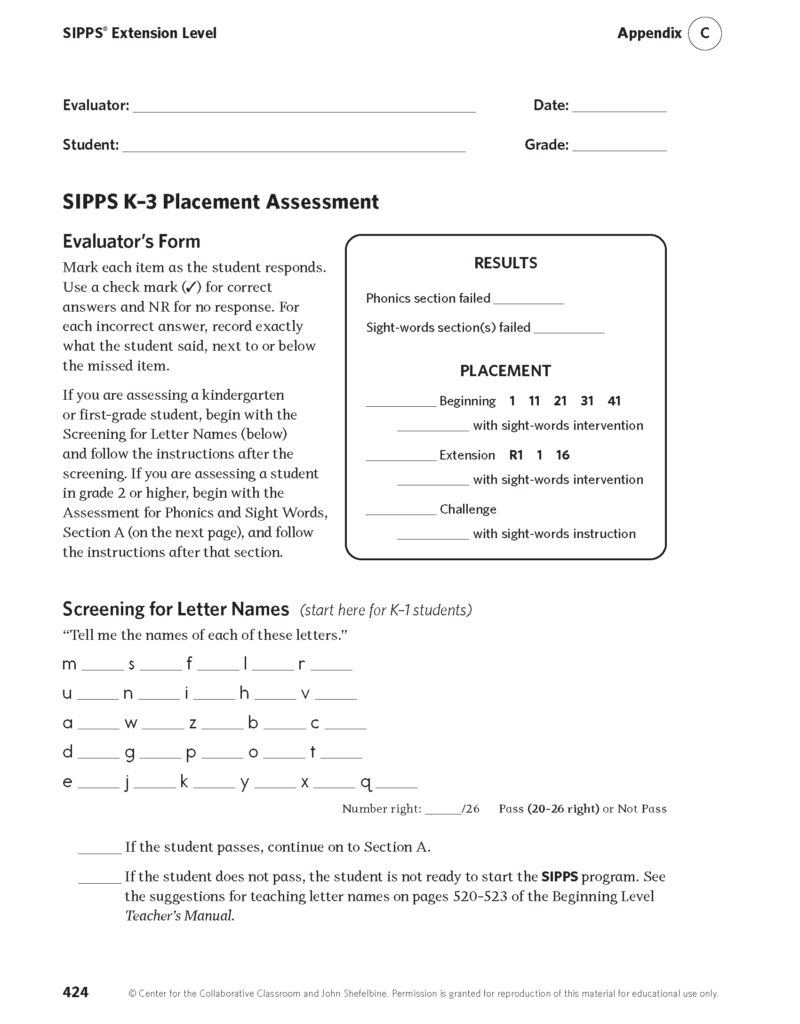
After placing students at their point of need, I began small-group instruction. I used what I learned over the summer practice sessions to hone my instructional routines.
The mastery tests every five lessons helped me keep a pulse on my students’ progress. Most students moved through the instruction at the pace I desired—not needing much reteaching. However, three students did require reteaching. I regrouped my students to make sure their individual needs were being met.
It has been exciting to watch how direct and systematic instruction impacted ALL of my second grade readers, not just those identified by MAP scores. By the end of the year, all of my students were becoming far more proficient spellers and readers with a level of confidence I had not seen in years past.
It has been exciting to watch how direct and systematic instruction impacted ALL of my second grade readers, not just those identified by MAP scores. By the end of the year, all of my students were becoming far more proficient spellers and readers with a level of confidence I had not seen in years past.
What have you noticed about your students’ learning and engagement?
SIPPS instruction was one of the students’ favorite times of day! They loved the predictable lesson structure, especially the Guided Spelling routine.
Over the course of the year, their confidence as readers and writers grew tremendously—even students who struggled with reading the most!
For the first time, they felt success in reading and could engage in sharing a love for reading with their peers. This was a boost to their confidence, self-esteem, and motivation to put forth their best efforts.
When we gave the midyear MAP assessment, I commented to one student that I noticed he was working especially hard on the assessment. His response was, “Well, Ms. Thompson, I could actually read the words this time.”
When we gave the midyear MAP assessment, I commented to one student that I noticed he was working especially hard on the assessment. His response was, “Well, Ms. Thompson, I could actually read the words this time.”
Implementing SIPPS was the only thing I changed about my teaching this year, and my student growth was what I had hoped for when I began SIPPS.
- Fall students at or above the 40th percentile: 9/19 (47.3 percent)
- Spring students at or above the 40th percentile: 17/19 (89.4 percent)—In fact, all 17 were above the 51st percentile
Next year, educators in South Carolina are preparing to implement new standards. How does SIPPS pair with these new standards?
At first glance, I immediately noticed the alignment between SIPPS and the new South Carolina Standards.
For example, the new standards require a systematic and explicit approach to reading instruction. The SIPPS program is a multi-leveled, systematic decoding program that supports students throughout the stages of word recognition development (simple alphabetic, spelling pattern, and polysyllabic/morphemic).
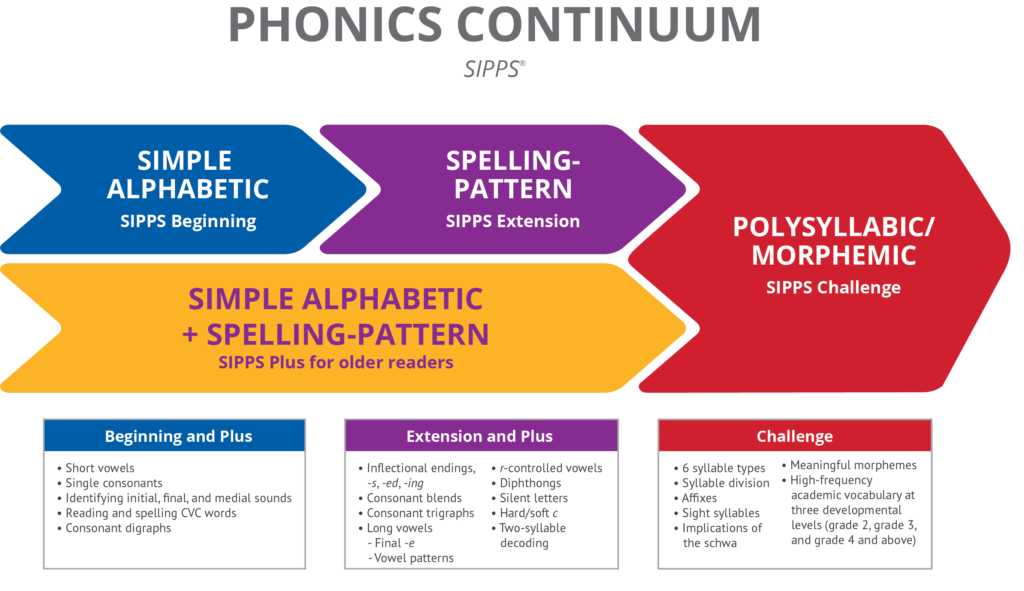
I am confident that I am teaching with a research-based program that aligns with what the new SC standards are requiring.
And I believe that teaching the SIPPS program has helped us and can help other teachers in South Carolina meet the Foundations of Literacy standards.
What advice or insights would you share with an educator who is considering SIPPS as a resource for aligning their instruction to the new SC CCR ELA standards?
Because the new standards require many of us to change the way we approach reading instruction, we can’t be afraid to try new things: new research-based reading interventions, and/or new evidence-based programs like SIPPS.
Embedded Instructional Supports
One thing I appreciate about the SIPPS program is the embedded instructional support, especially the instructional routine videos. They provide me with a clear model of each new routine at the precise time I need it. Having these video models also helps my own instructional routines become more clear, concise and consistent which in turn leads to accelerated growth in my students.
Digital Instructional Supports
Watch the Reading a Mixed List Routine video.
The digital Learning Portal also has an abundance of support. I highly encourage new SIPPS teachers to dig into, especially the SIPPS Implementation Guidance chicklet.
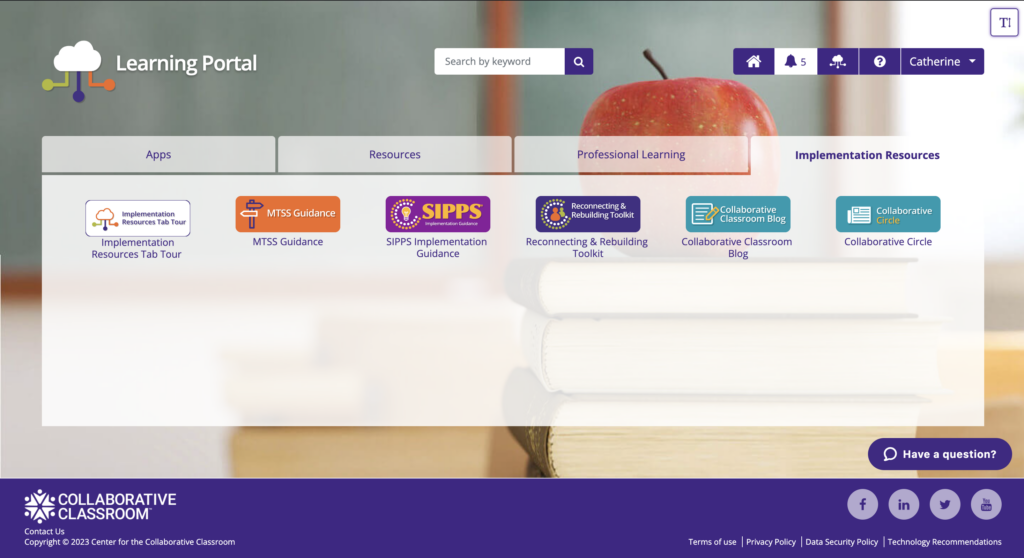
Instructional Self-Checks
Next year, our plan is to use the Instructional Self-Checks (provided every 5–10 lessons) as a way to monitor and strengthen our implementation.
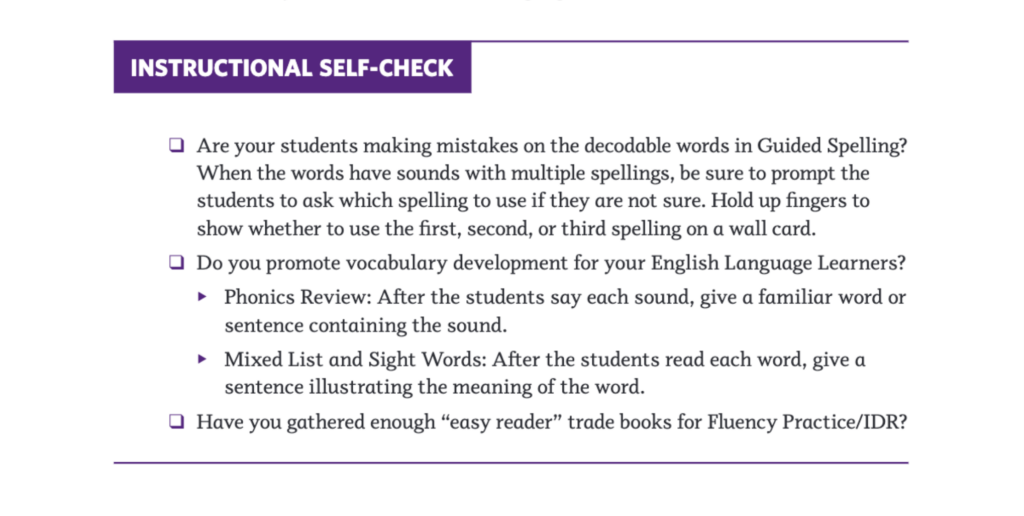
Again, not being afraid to use the program supports has helped me feel successful right from the beginning. It was like having built-in coaching!
[N]ot being afraid to use the program supports has helped me feel successful right from the beginning. It was like having built-in coaching!
Learning how to teach with the SIPPS program has helped me embrace a growth mindset and feel more ok with “not knowing.” So often teachers get caught up in imposter syndrome. We feel that if we say we don’t know something or how to teach something, we think others will doubt our abilities as an educator.
But isn’t taking risks and making mistakes what we teach our students to do? Teaching SIPPS has helped me grow right alongside my students. When we know better, we do better!
***
Learn more about SIPPS.
Read an interview with another South Carolina literacy leader: A Perfect Pairing: SIPPS and South Carolina’s New ELA Standards—An Interview with Scarlett Mooney
Read how North Carolina Teachers Combine Best Practice with SIPPS
